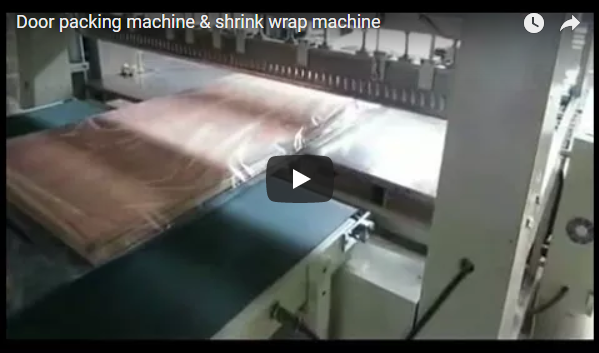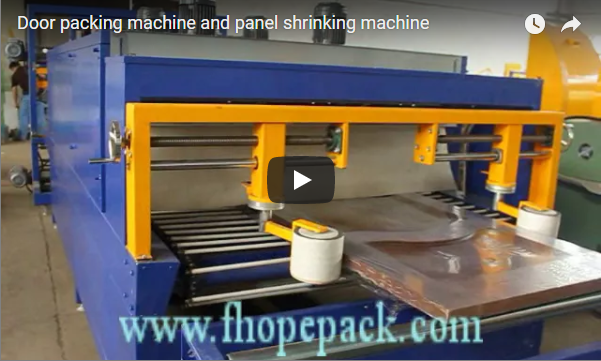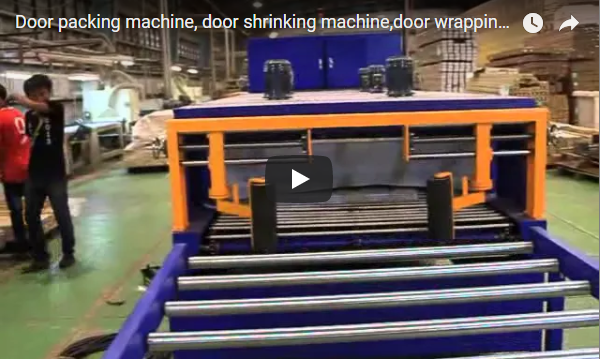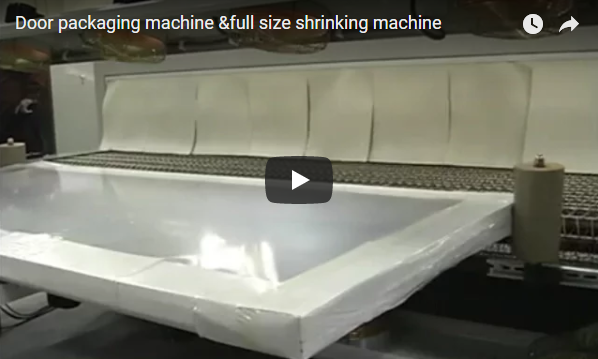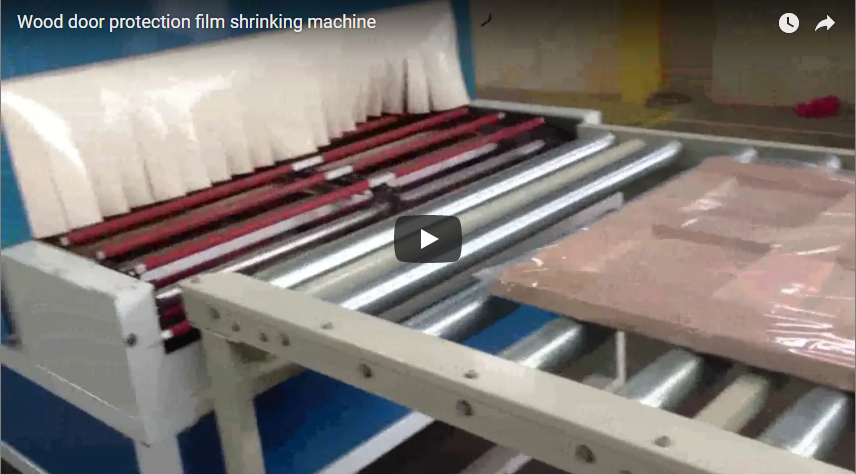Optimizing Cable and Wire Packaging: A Deep Dive into Automatic Coiling, Strapping, and Shrinking Lines
In today's demanding cable and wire industry, efficient and reliable packaging is not just a necessity, it's a competitive advantage. Manual or semi-automated processes often struggle to keep pace with production speeds, leading to bottlenecks, inconsistent quality, and increased labor costs. Integrated automatic packaging lines, combining coiling, strapping, and shrinking functions, offer a powerful solution. This article explores the technical capabilities and operational benefits of such systems, drawing on insights from solutions like those offered by FHOPE.
Video demonstrating an integrated automatic cable coiling, strapping, and shrinking line in operation.
1. Precision in Motion: The Automatic Cable Wire Coiling Machine
The foundation of the automated line is the coiling machine. Its primary function is to wind cable or wire into neat, consistent coils of predetermined lengths. Modern systems go far beyond simple winding:
- PLC Control: A Programmable Logic Controller (PLC) serves as the brain, meticulously managing coiling parameters like length, speed, and tension. This ensures high repeatability and accuracy coil after coil. Operators often find the HMI (Human Machine Interface) linked to the PLC intuitive for setting up different cable recipes.
- Variable Speed Drives: Advanced drives allow for controlled acceleration, constant running speed (systems like FHOPE's can achieve speeds up to 80 meters per minute, depending on the cable), and gentle deceleration, preventing cable damage and ensuring tight, uniform coils.
- Tension Control: Maintaining consistent tension is crucial, especially for sensitive or fiber optic cables. Sophisticated dancers or electronic tension control systems prevent stretching or slack, leading to a stable coil structure.
- Customization: Leading suppliers like FHOPE offer customization to handle a wide range of cable diameters, materials (from copper conductors to fiber optics), and final coil dimensions to meet specific downstream or customer requirements. From personal experience, specifying the exact range of products upfront is key to getting a machine that performs optimally across your entire portfolio.
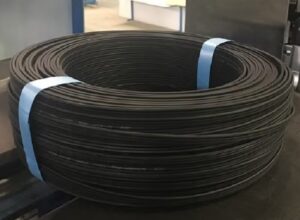
automatic cable coiling 2. Securing the Product: The Integrated Strapping Unit
Once the coil is formed, it needs to be secured for handling and transport. An integrated automatic strapping machine performs this task seamlessly:
- Automated Transfer: The coiling machine typically presents the finished coil directly to the strapping station, minimizing manual handling.
- Strapping Technology: These units commonly use PP (Polypropylene) or PET (Polyester) straps. The machine automatically feeds the strap around the coil, tensions it to a pre-set level, and seals it using heat or friction welding.
- Multiple Straps: Depending on coil size and stability requirements, the system can be programmed to apply multiple straps at designated positions (e.g., two or three straps per coil).
- Cycle Time: Integration ensures the strapping cycle is synchronized with the coiling process, maximizing overall line throughput. A poorly strapped coil can easily become misshapen during handling, highlighting the importance of this stage.
3. Protection and Presentation: The Shrinking Machine
The final stage in this integrated line involves shrink wrapping the coiled and strapped product:
- Purpose: Shrink wrapping provides environmental protection (dust, moisture), enhances coil stability, bundles multiple coils if needed, and offers a professional, tamper-evident finish.
- Process: The strapped coil is typically conveyed through a heat tunnel. Controlled hot air circulation causes a pre-applied polymer film (like PE - Polyethylene) to shrink tightly around the coil.
- PLC Integration: Temperature and conveyor speed are precisely controlled by the PLC to ensure consistent shrinking without damaging the cable insulation or jacket. Finding the 'sweet spot' for temperature and dwell time based on the film thickness and cable type is crucial for a perfect finish.
- Energy Efficiency: Modern shrink tunnels incorporate insulation and optimized airflow designs to minimize energy consumption, a key consideration for operational costs.
4. System Integration and Control: The Power of the PLC
The seamless operation of these three distinct processes relies heavily on the central PLC system:
- Coordination: The PLC synchronizes the start/stop signals, speed adjustments, and material handoffs between the coiler, strapper, and shrink tunnel.
- Recipe Management: Allows operators to store and recall specific parameter sets (coil length, strapping tension, shrink temperature) for different cable types, reducing setup time and errors.
- Diagnostics: Provides real-time monitoring and fault detection, simplifying troubleshooting and minimizing downtime. Experienced maintenance teams value comprehensive diagnostic tools for rapid issue resolution.
- Flexibility: Enables easy adjustments to parameters to accommodate variations in materials or packaging requirements.
5. Key Technical Considerations & Parameters
When evaluating an automatic cable packaging line, consider these typical specifications:
- Applicable Wire/Cable Diameter: Specify the minimum and maximum range.
- Max. Coiling Speed: e.g., up to 80 m/min (material dependent).
- Coil Dimensions (ID, OD, Width): Define the required finished coil sizes.
- Max. Coil Weight: Ensure the system can handle your heaviest products.
- Strapping Material: Typically PP or PET.
- Shrink Film Type: Commonly PE.
- Control System: PLC Brand and HMI type.
- Power Requirements: Voltage, Frequency, Phase.
- Compressed Air Requirements: Pressure and Consumption.
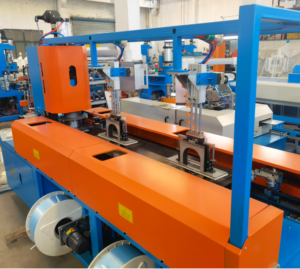
automatic cable coiling2 6. Tangible Benefits of Automation
Investing in an automated coiling, strapping, and shrinking line delivers significant advantages:
- Increased Throughput: Continuous, synchronized operation dramatically boosts packaging speed compared to manual methods.
- Reduced Labor Costs: Automation frees up personnel for higher-value tasks, directly impacting the bottom line. We've seen operations re-allocate staff to quality control or machine supervision roles.
- Consistent Quality: Automated control eliminates human variability, ensuring every coil is wound, strapped, and wrapped to the same high standard. This reduces waste and improves customer satisfaction.
- Improved Safety: Reduces manual handling of heavy coils and interaction with moving machinery.
- Enhanced Protection: Secure strapping and shrink wrapping protect the product during transit and storage, minimizing damage claims.
7. Conclusion: Investing in Future-Proof Packaging
Automatic cable wire coiling, strapping, and shrinking machines represent a vital investment for manufacturers seeking efficiency, quality, and cost savings. Systems like those developed by FHOPE demonstrate the power of integrating these processes under precise PLC control. By carefully evaluating technical requirements and partnering with experienced suppliers, companies can implement robust automated packaging solutions that streamline operations and enhance their competitive edge in the global marketplace.
For more information on specific cable and wire packaging solutions:
https://www.fhopepack.com/Cable-packing-machine/
Contact for inquiries: info@fhopepack.com

